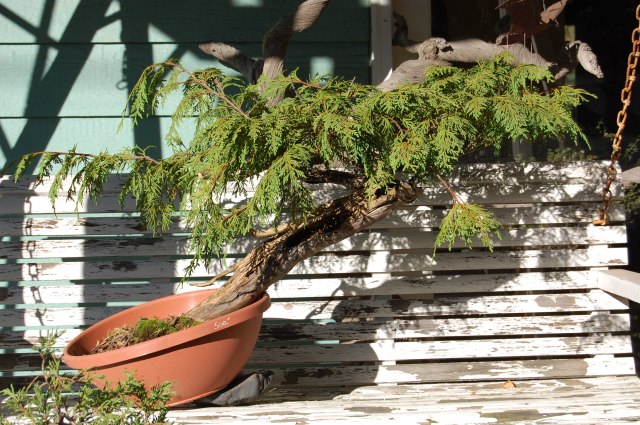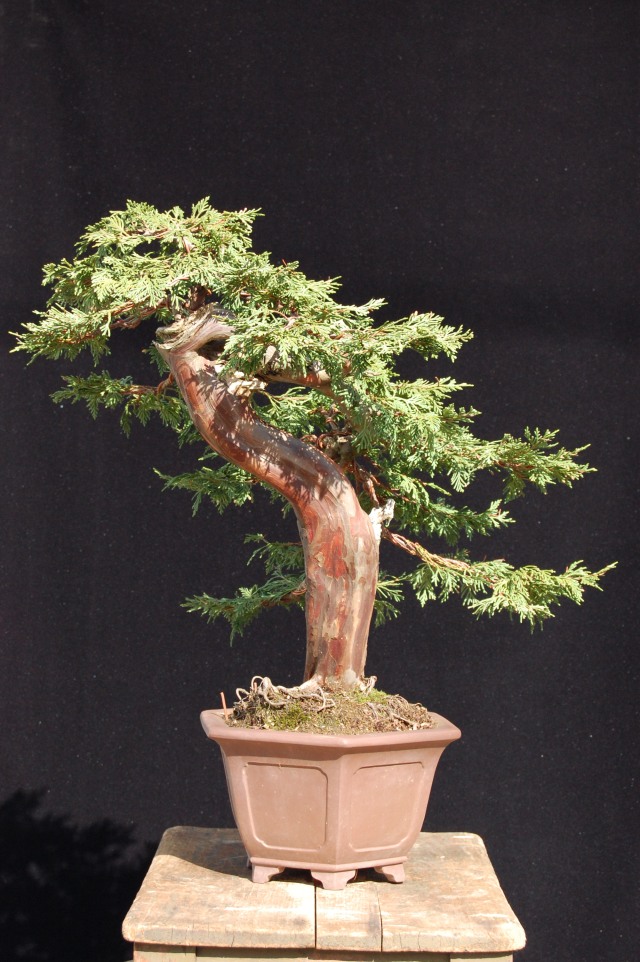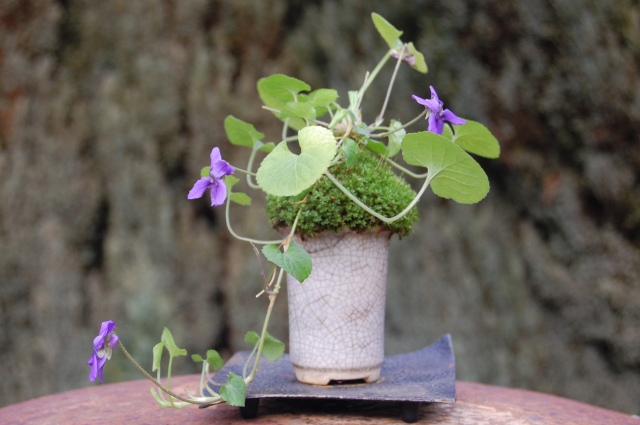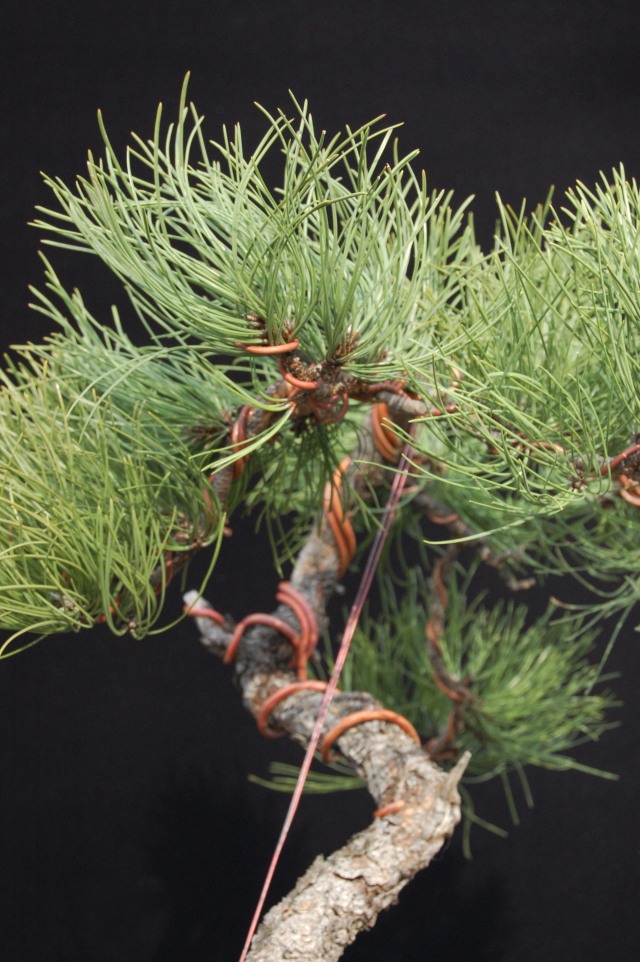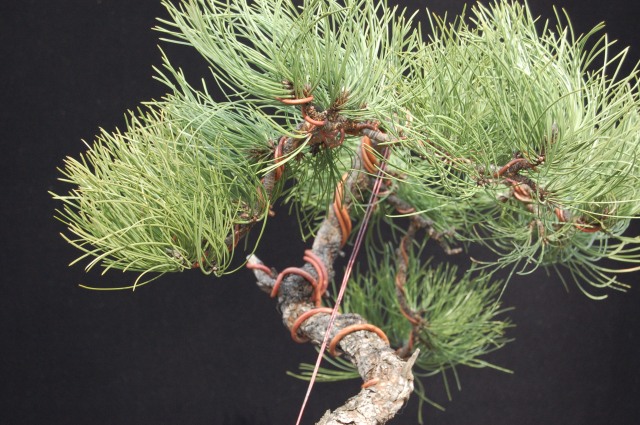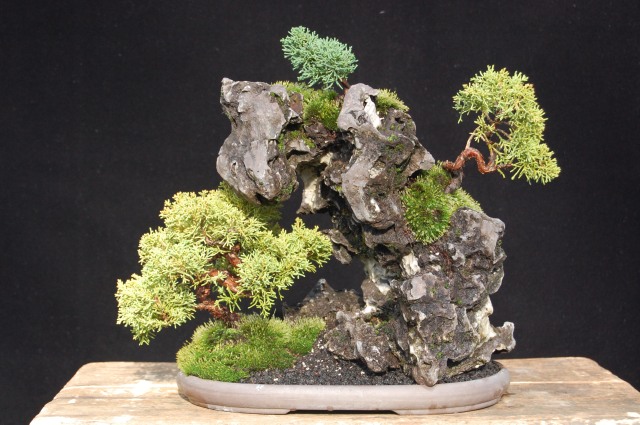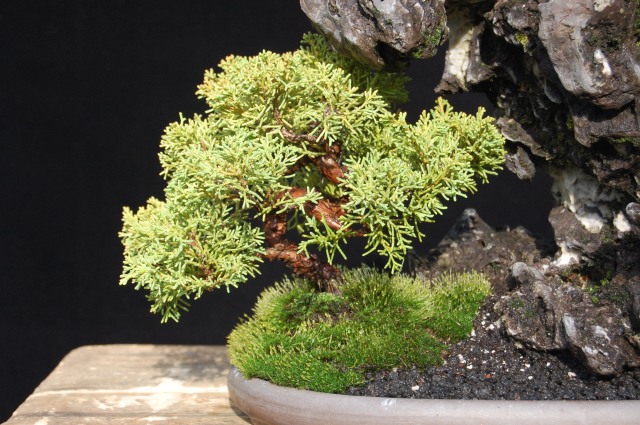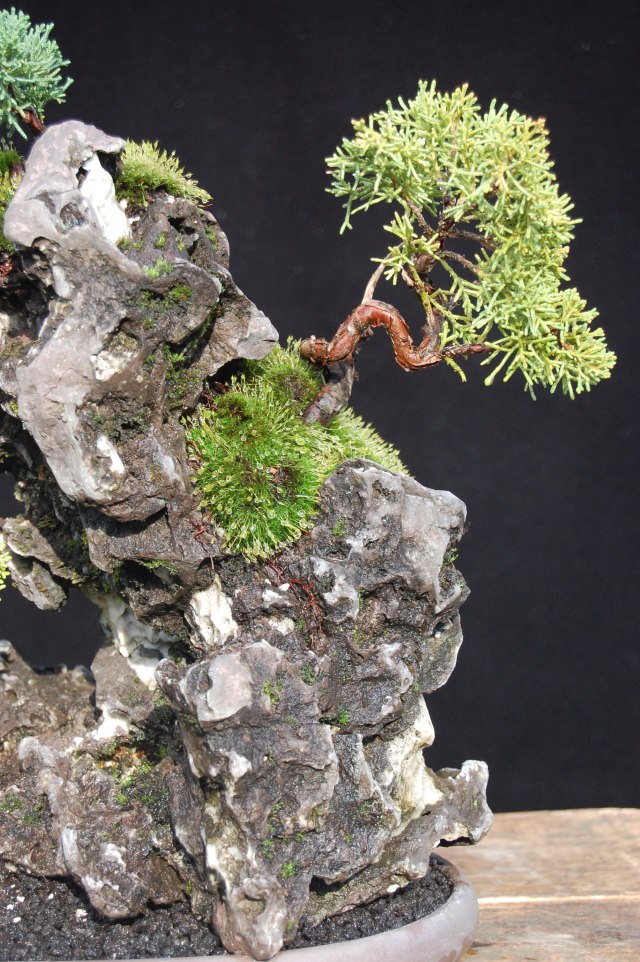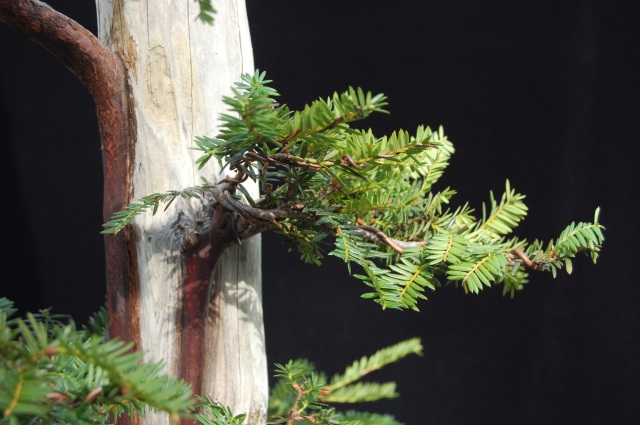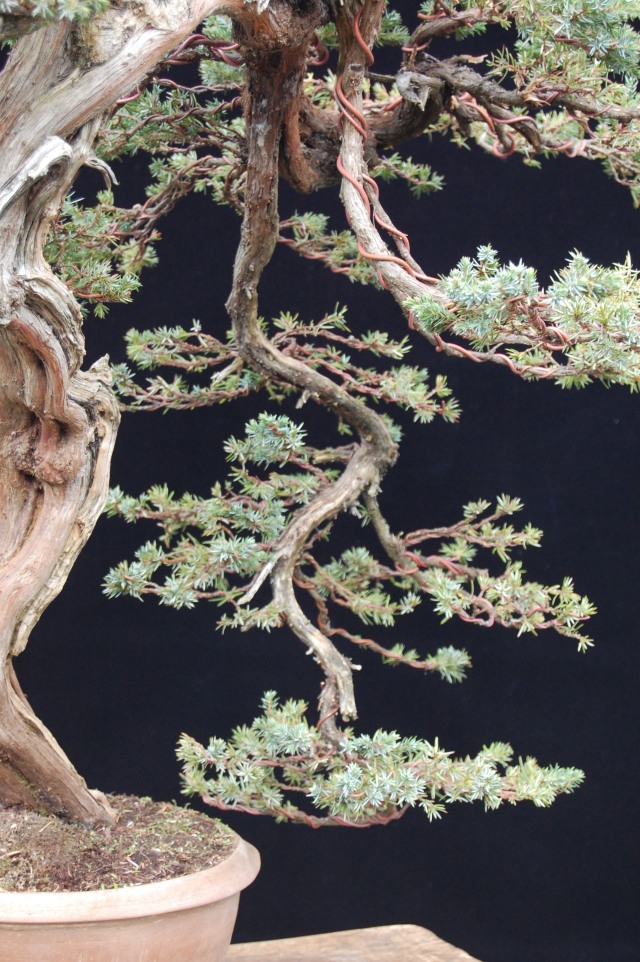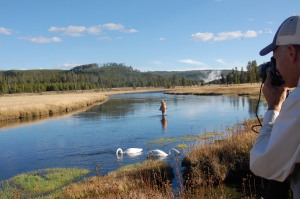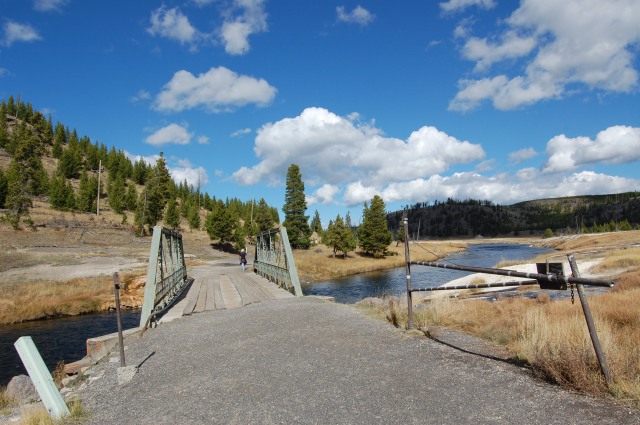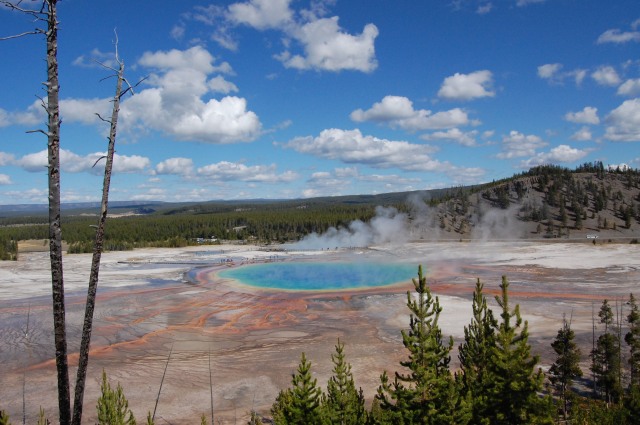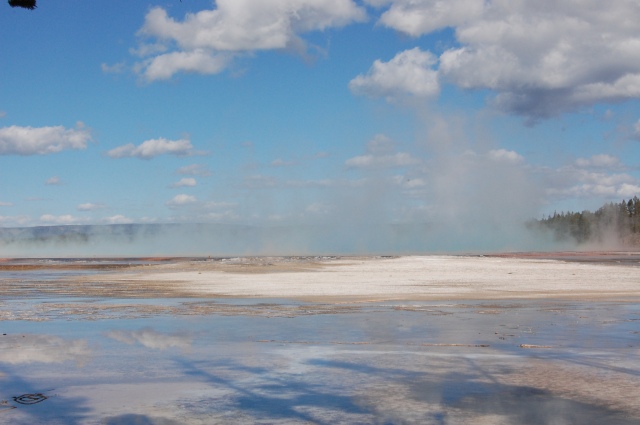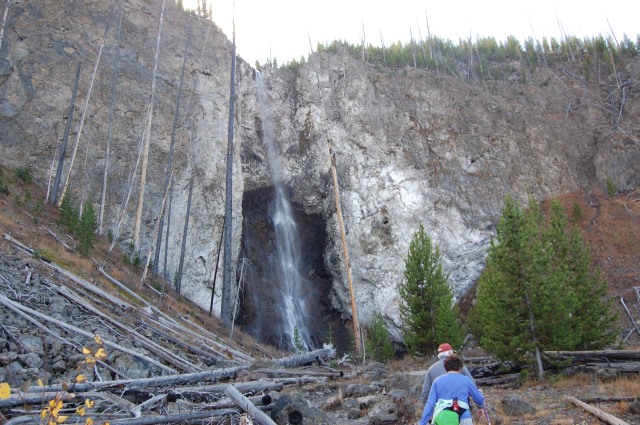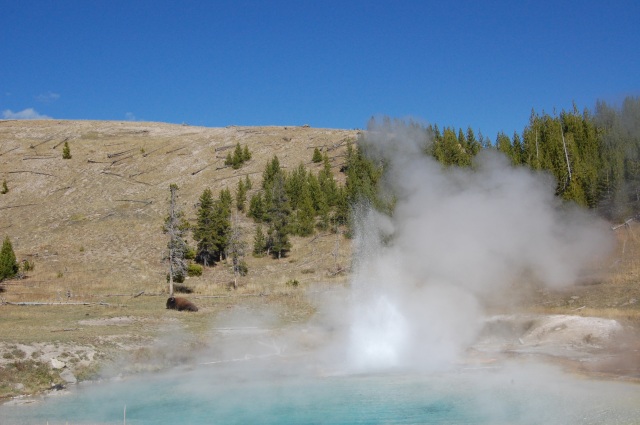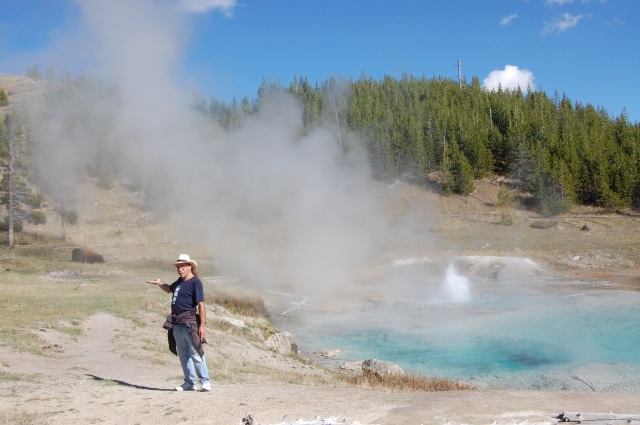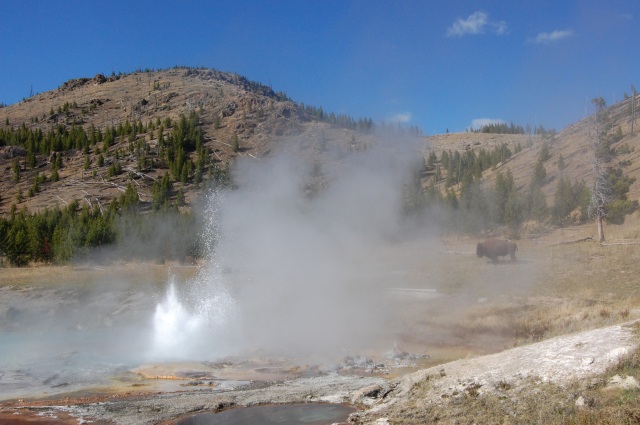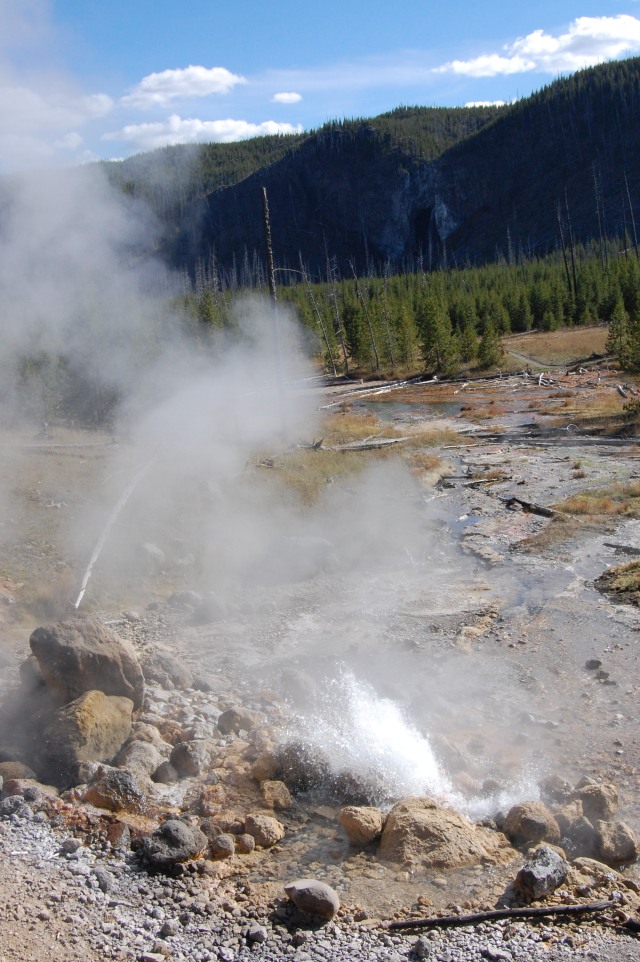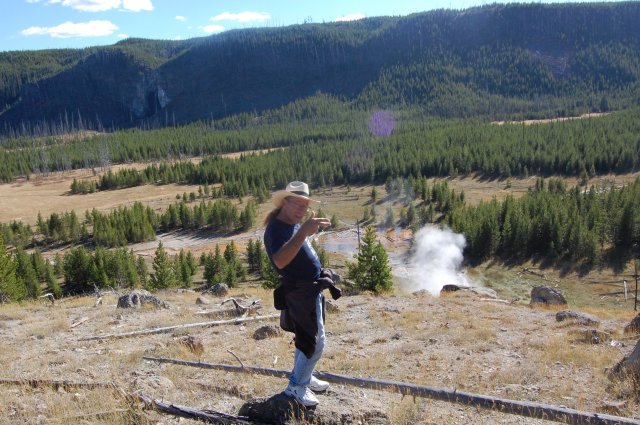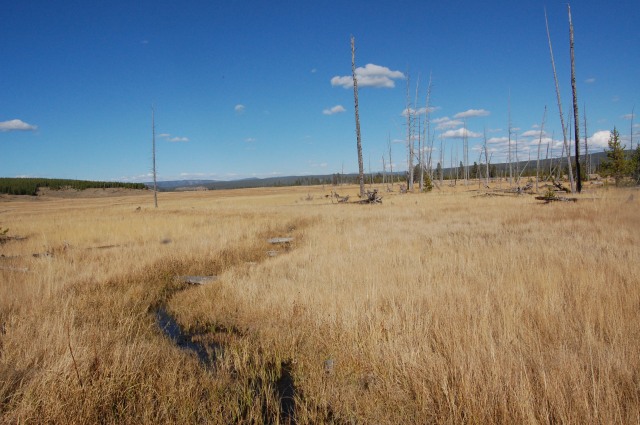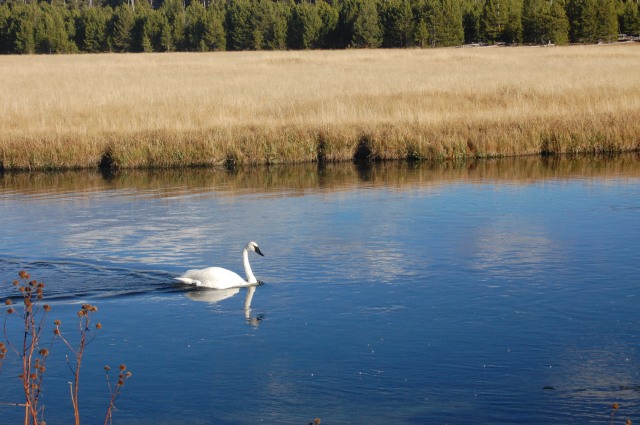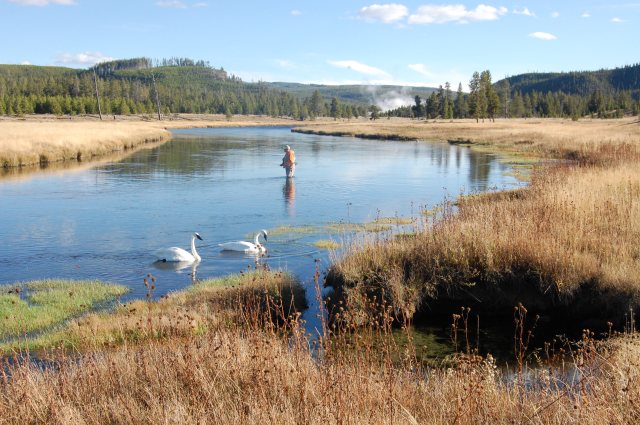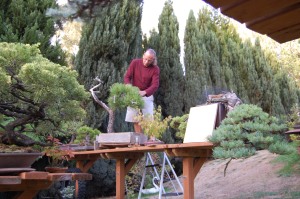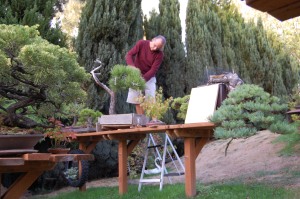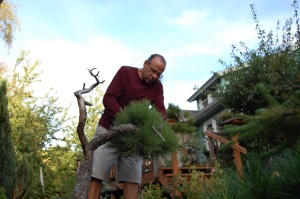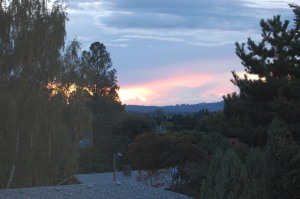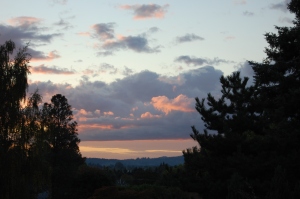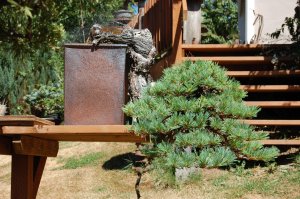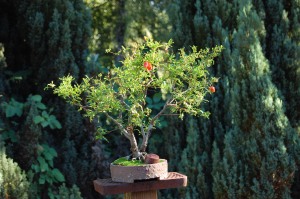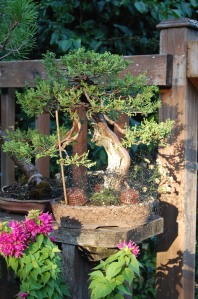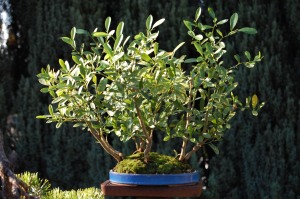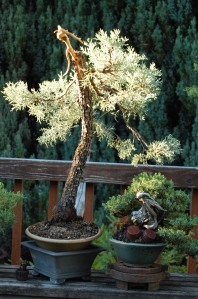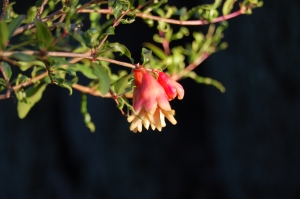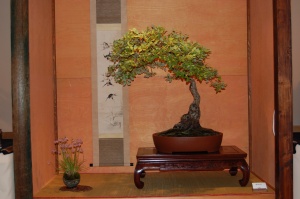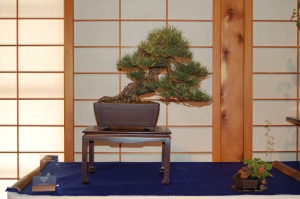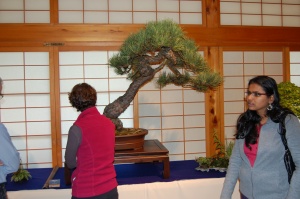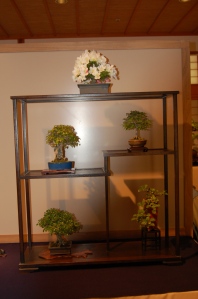The very dry summer we had here in Portland would lead you to think it would make for a poor fall collecting season…but after a scouting trip in early August, the trees were definitely actively growing roots. Everything I brought home responded very well to receiving regular watering for a change, especially the sub alpine firs. Their needle color went from a stressed yellowish color to green very quickly and stiffened up as they became turgid with the much needed moisture. I gave them all some organic fertilizer I’d made late summer and even felt confident enough to style some of them. So here are a few I was able to photograph well–there are many too large to get good photos of and will post about these when the time is right. First up is a natural bunjin style tree I cleaned up, removing toothpick jins and junk from the trunk, but nothing else:
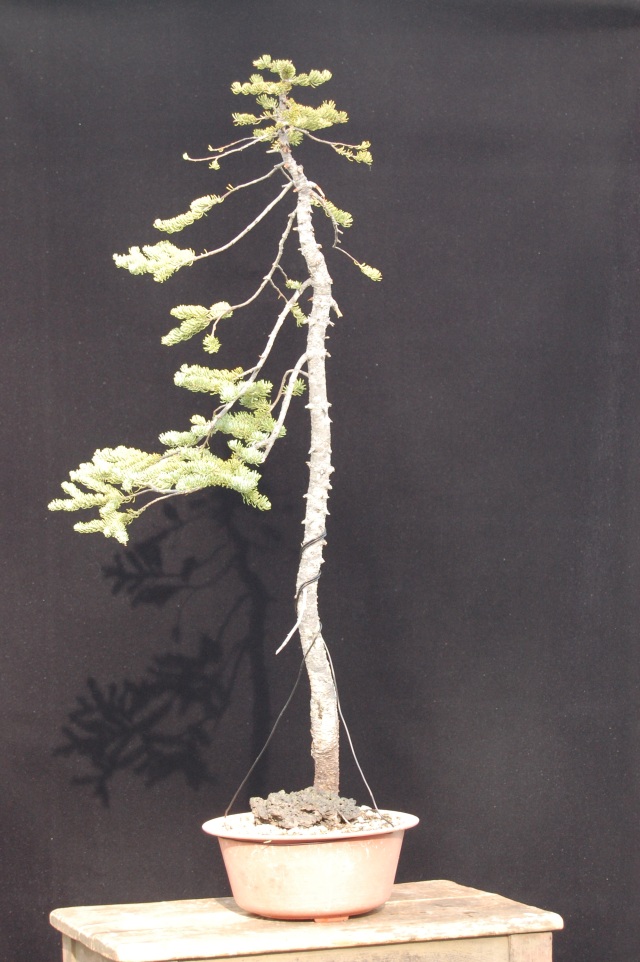
At 41″ tall, this tree imparts a feeling of an older tree in the forest, growing up to compete with others for sunlight, while displaying the downward branches typical of long winters of heavy snow load. It also has fairly mature bark which is hard to find with these firs; the smaller ones that are collectible are usually saplings with very smooth bark. This was collected in early August and is acclimating very well. Next is a little cascade style I collected during the same trip:

I found this growing upright and as such, had a long, slow curve for a trunk line. After puzzling over what to do with it, one day I got out some expanded metal lathe to cover the surface of the pot and tipped it to see how it might look as a cascade…I liked what I saw and was inspired to follow through with a light wiring to rough in the design. While I’m on the topic of cascade style, I found another tree in a semi-cascade orientation during the same trip:

This tree is quite old and has deeply fissured corky bark, as well as shari starting from the base of the trunk and continuing to the dead jin that was once the tree’s apex. It was growing in a pocket of rock on a ledge and I was able to get the entire root system home with me. It had one branch growing ram-rod straight and I couldn’t resist styling it to see what I could do with it…a detail of the work:

I’ve found fall to be the best time to work on these trees as their bark is very soft and sappy if bruised or broken; some kind of protection such as raffia is essential for bending larger branches. A shot of the tree’s apex:
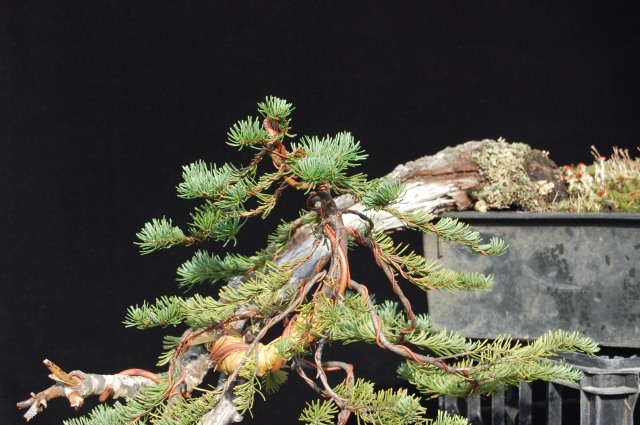
The shari along the trunk:
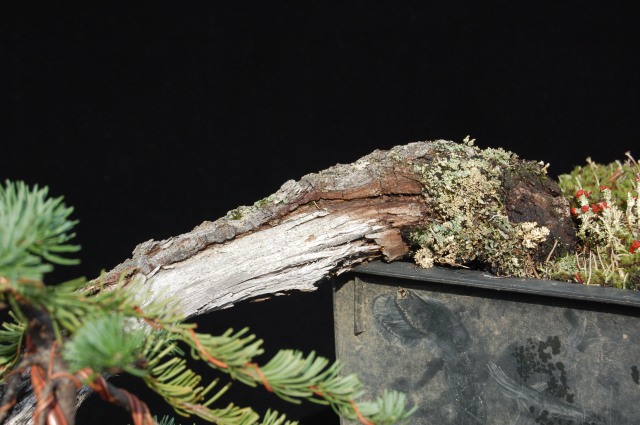
These trees retain a lot of resin in their sapwood and heartwood and the shari on this one is very good–no rot is present yet and the bone white color is totally natural, I haven’t used a drop of lime sulphur on it. And a final detail of the base of the trunk, which is 3 1/2″ in diameter where it emerges from the soil:

And here’s a little something I found, a small forest that was a rodent’s cache or a cone whose seeds never dispersed and sprouted together. There are seven trunks and an Oregon boxwood to boot…a real treasure of a find:
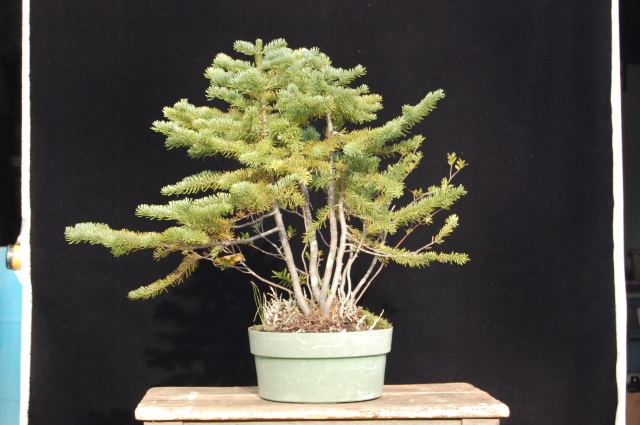
I think a little pruning and a little wire will be all that’s needed to make this a stunner…oh, and a nice pot 😉

A detail showing branches already set with downward angles and a nice, natural mochikomi surface surrounding the trees. This is something I always try to preserve when I collect a tree, I think it’s sad to see other collected trees with the surface soil and mosses ripped away unecsessarily. I know it’s not always possible to retain something like this, but I like to if and when I can as it can give a real sense of place where the trees have originated, a built-in accent planting, if you will. Next I’d like to show you a tree I found falling away from a vertical rock wall. I could see that if I didn’t collect it, fate was not going to be kind to this one…
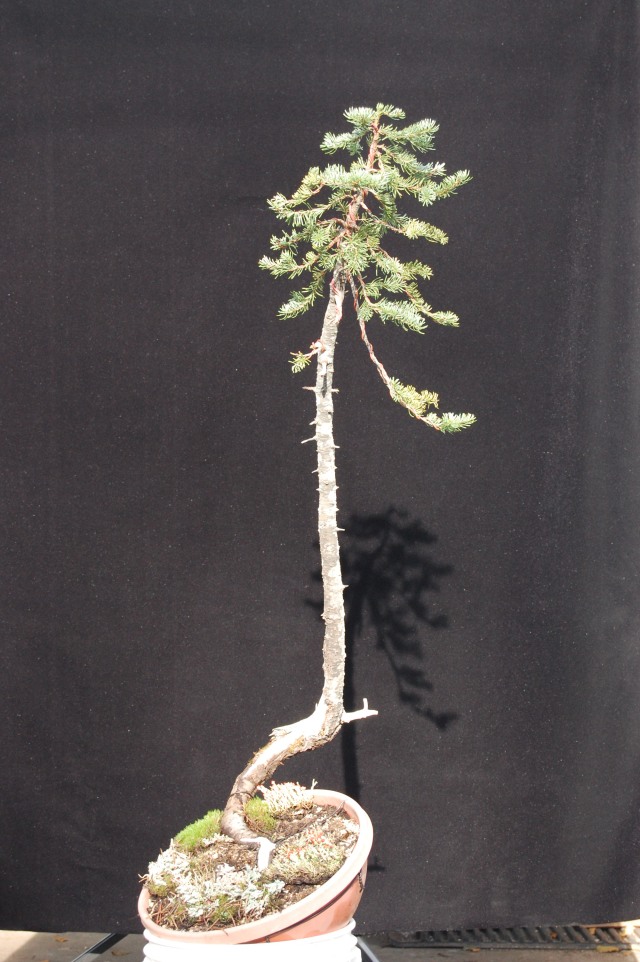
Another tree I was able to get the entire root system of, I fertilized immediately and styled the same season as collected. I used every branch this tree had, here’s a shot of the work:

One last shot of the base of the trunk; this one another long, tall Sally measuring in at 42″:

I saved the best for last…I almost passed this one up as I saw it from a distance; it looked like a sapling from far away but something about where it was growing caused me to come in for a closer look, dangling from a vertical rock wall. I was thrilled to find a very old, contorted and twisted trunk that was rooted to the wall in two places:
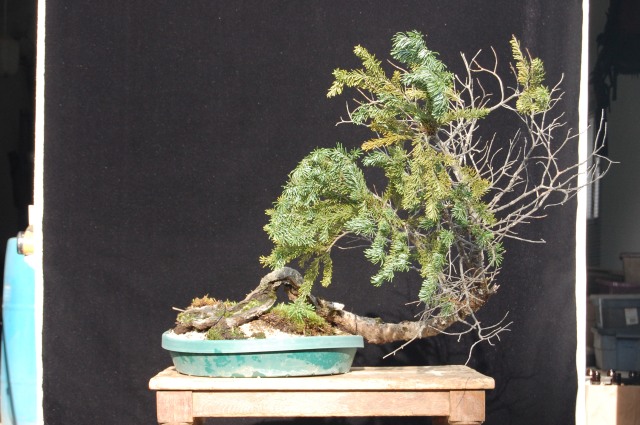
I haven’t touched this one yet and it was so wide I couldn’t get it in on the background. A detail of the shari:

And closer:

This is a very old tree by the look of the bark and the shari on the trunk. A look around the back:

That’s all for today…I hope I’ve whetted your appetite for sub alpine fir bonsai 😉
